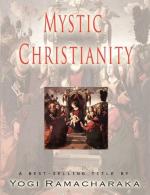Back to Pilate’s court, followed by the crowd, went Jesus. Pilate was greatly annoyed that Herod should have shifted the responsibility once more upon his (Pilate’s) court. Then he bethought himself of an expedient. He took advantage of the Jewish custom, observed by the Roman rulers, which led to the pardoning of a notorious criminal on the occasion of the Passover. And so he announced that he would pardon Jesus according to custom. But from the Jewish authorities came back the answer that they would not accept Jesus as the subject of the pardon, but demanded that Barabbas, a celebrated criminal, be pardoned instead of the Nazarene. Pilate found himself unable to escape the designs of the Jewish priesthood, and so, yielding in disgust, he pardoned Barabbas, and condemned Jesus to death. The cries of the mob, incited by the priests, sounded around the court. “Crucify him! Crucify him!” Pilate appeared before the priests and the populace, and, washing his hands in a basin, according to the Oriental custom, he cried to the Jews, “I wash my hands of this man’s blood—upon you be it!” And the crowd responded with a great shout, “Upon us and our children be his blood!”
Jesus, in the meantime, had been cruelly scourged by the barbarous instruments of torture of the time. His body was lacerated and bleeding, and He was faint from the torture and loss of blood. Upon His head had been thrust, in ghastly mockery, a crown of thorns which pressed deep into His flesh. He was refused the usual respite of several days before sentence and execution—He was to die that very day.
His cross was tied to His back and He was compelled to carry it, fainting though He was from fatigue and torture. He staggered along and fell, unable to bear His heavy burden. Finally Golgotha, the place of the crucifixion, was reached, and the Man of Sorrows was nailed to the cross and raised aloft to die a lingering and painful death. On either side was a criminal—two thieves—His companions in suffering.
He refused to partake of the drug which was granted to criminals to relieve their intense suffering. He preferred to die in full possession of His faculties. Above His head was a tablet bearing the inscription, “The King of the Jews,” which had been placed there by Pilate in a spirit of ironical mockery of the Jews who had forced him to place this man on the cross.
As the cross was raised into position the Master cried aloud, “O Father, forgive them—they know not what they do.”
Taunted by the crowds, He hung and suffered the terrible agonies of the cross. Even one of the crucified criminals reviled Him, asking Him why He did not save Himself and them? The crowd asked Him why He who saved others could not save Himself? But He, who could have brought forces to bear which would have wrought the miracle they demanded, answered not, but awaited the end.
Then set in the delirium of death in which He cried aloud to the Father, asking if He had been forsaken in His misery. But the end was near.




